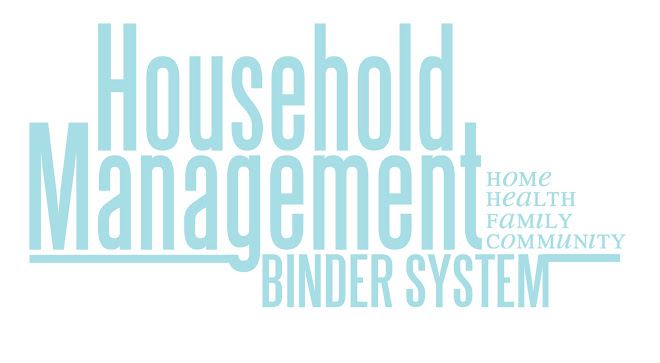To make a household management binder, use a 3-ring binder and dividers labeled with section headings. Type up the information you need, print it out, and store it in your binder.
For example, you won't have your actual credit card in the binder, but you'll have a document detailing the issuing bank, the payment address, your online username/password, and the phone number to call in the event the card is stolen. And you'll have other things, too, like directories of all the contractors and utility providers you use, medical histories, a schedule of when your bills are due each month, a list of all open accounts in your name, etc. The binder will be a home for the information you use on a daily basis, as well as the information you'll need in the event of an emergency.
First, identify the purpose of your binder. How will you use it? What will you use it for? You may want your binder to hold information you'll need for emergencies only, or, you may want it to also include directories, menu plans, cleaning schedules, and other documents that will help you manage your life not just in an emergency, but every day.
When creating my binder, I had three objectives: 1) to consolidate information that would help me to better manage my household on a day-to-day basis; 2) to make that information available to someone other than myself who would have to take over the management of my household; and 3) to centralize all the critical information I would need to piece my life back together in the event of a major catastrophe such as a house fire or death in the family.
What will you use your binder for? What information do you use frequently that could be accessed more readily if it were all in one place? If you suffered a major life change like divorce, death, or house fire, what information would you need to have all in one place?
Second, determine what information to add. When deciding what to add to your binder, ask yourself if what you want to add is consistent with your binder's purpose and your organizational objectives. If it's not, don't include it.
Third, ask yourself where you'll keep your binder. Where you plan on storing your binder is a good indicator of how you'll use it. Knowing that will help you better tailor the project to your needs.
For example, I use my binder on a daily basis, so it sits on the desk in my front hallway near the phone and family calendar and right by the door (so I could grab it on my way out in an emergency). Because I keep it out, I do not include sensitive information in the binder. For instance, in my Credit Card section, I include the phone number for the credit card company, but not the actual card account number. You'll want to keep the placement of your binder in mind when deciding what information to include and what not to include.
The important thing to remember is that this is your binder. It should meet your needs and fit your lifestyle. Include the information that you'll use and that will be helpful to you. Make the binder into whatever you need it to be.
skip to main |
skip to sidebar
Organize yourselves; prepare every needful thing; and establish a house. . . a house of order, a house of God.
Doctrine & Covenants 88:119
Organize yourselves; prepare every needful thing; and establish a house. . . a house of order, a house of God.
Doctrine & Covenants 88:119
ABOUT THIS BLOG
The Household Management Binder System is an infinintely adaptable system of organization for critical documents and information--consolidated into one easy-to-use binder--that will both streamline your daily life and serve as a safety net in the event of a disaster. This blog provides you with the tools for creating your own binder.
INDEX
ABOUT ME
I am a self-confessed control freak. Systematic organization is a natural extension of my need to impose order on my world. As a mother of two young boys, I often feel that I have very little control over what happens in my day. My Household Management Binder helps me feel like I'm making headway in what on most days is most certainly a losing battle.
